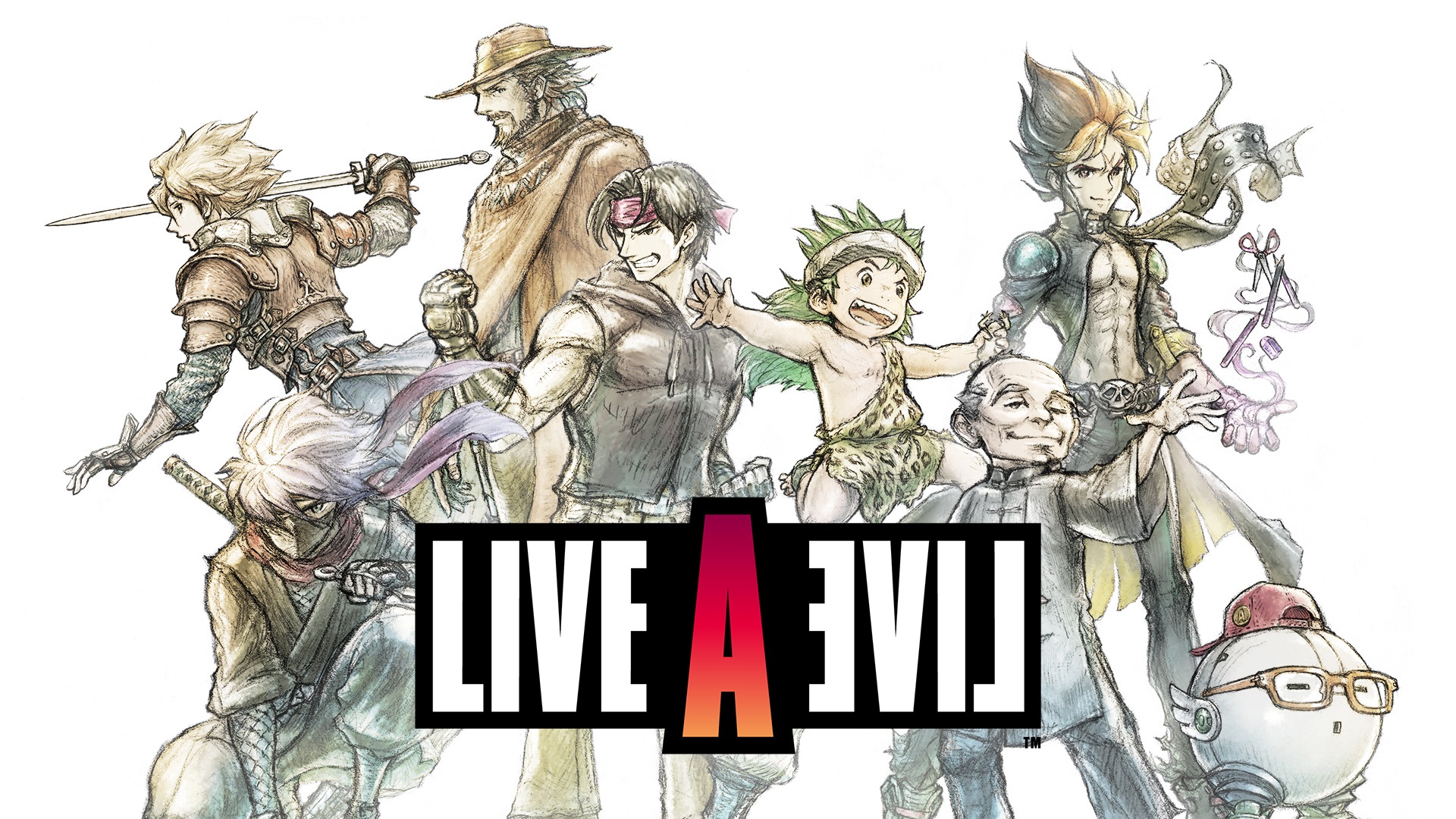
In 1994, Live A Live was released on the Super Famicom, exclusively in Japan. This was the brainchild of Takashi Tokita, the man who would eventually become the director of legendary hits like Chrono Trigger and Parasite Eve. This was a unique RPG for having many scenarios across different eras that all drew inspiration from various kinds of media.
One scenario was inspired by fighting games that were growing in popularity. Another scenario was modeled after mecha anime and there was even one that emulated stealth games too. There was one inspired by popular sci-fi films from the 70s, a kung-fu drama, and something for spaghetti western fans too. Even a caveman themed scenario was part of the equation.
After almost 30 years of cult classic status and being enjoyed thanks to a fan translation, Live A Live has been remade with Unreal Engine 4, in the “HD-2D” style. Finally, Live A Live can be enjoyed by a large scale western audience and see why it has been a cult classic. Just does this remake hold up? Find out in this Live A Live review!
Live A Live
Developer: historia Inc
Publisher: Nintendo, Square Enix
Platforms: Super Famicom (1994), Nintendo Switch (reviewed)
Release Date: July 22, 2022
Players: 1
Price: $49.99 USD
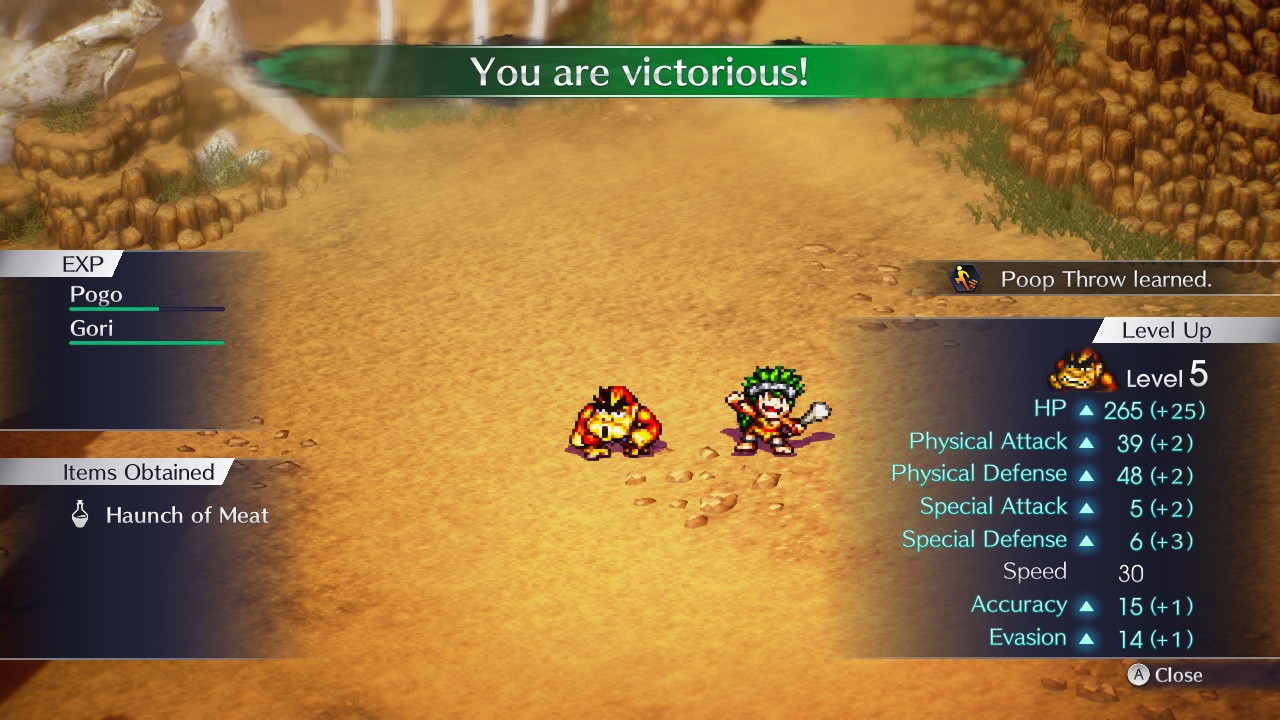
The idea of an “omnibus” RPG is very novel, even after all the time that has passed since Live A Live first came out in 1994. Each scenario of varying length comes with its own gameplay gimmicks to suit the need of the story.
Pogo of prehistory can detect scents and track beasts and other characters. His story plays out like an irreverent comedy with no text to read since language hasn’t been invented yet. The new sprites and animation for the remake prove their value here since prehistory relies on body language and emojis to convey the narrative.
Prehistory plays out like a standard RPG for the most part but is punctuated with lots of farting and poopies. There are amusing scenes of cavemen giving chase in Flintstones-style cars and even has an homage to 2001: A Space Odyssey.
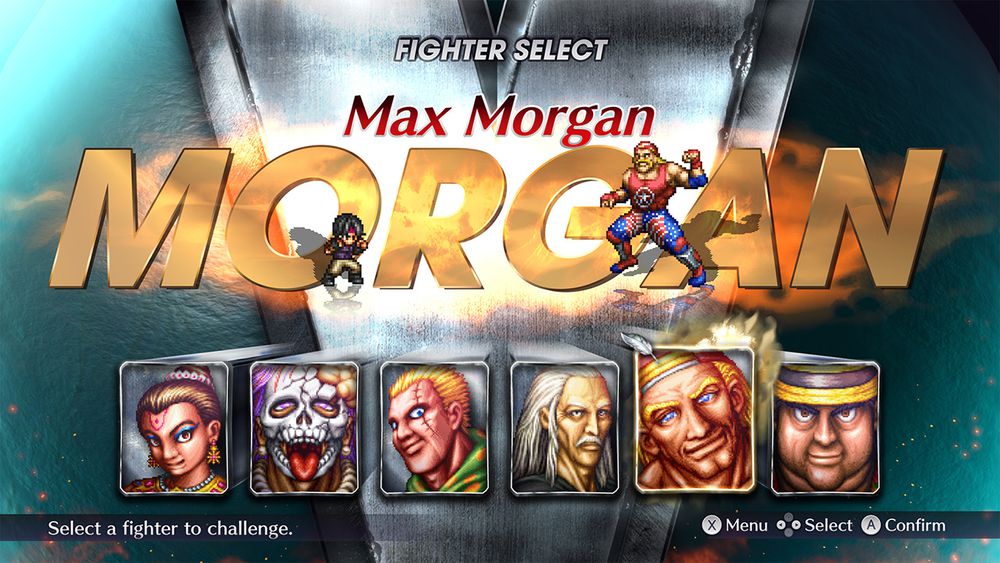
As mentioned in our Live A Live preview, Imperial China is centered on an aging kung-fu master. This scenario plays out like a wuxia drama and the gameplay gimmick is focused on a lite raising sim. As the Earthen Heart master, the player has to train a successor and choose between three pupils.
The Edo Japan scenario is about Oboromaru, a ninja who infiltrates a massive fortress. The gimmick here is that gameplay is open ended and sandboxy, with many ways to complete it and an emphasis on stealth gameplay. This remake enhances the gameplay thanks to the inclusion of a map of the castle, proper enemy AI, radar and Oborumaru keeping track of the passwords.
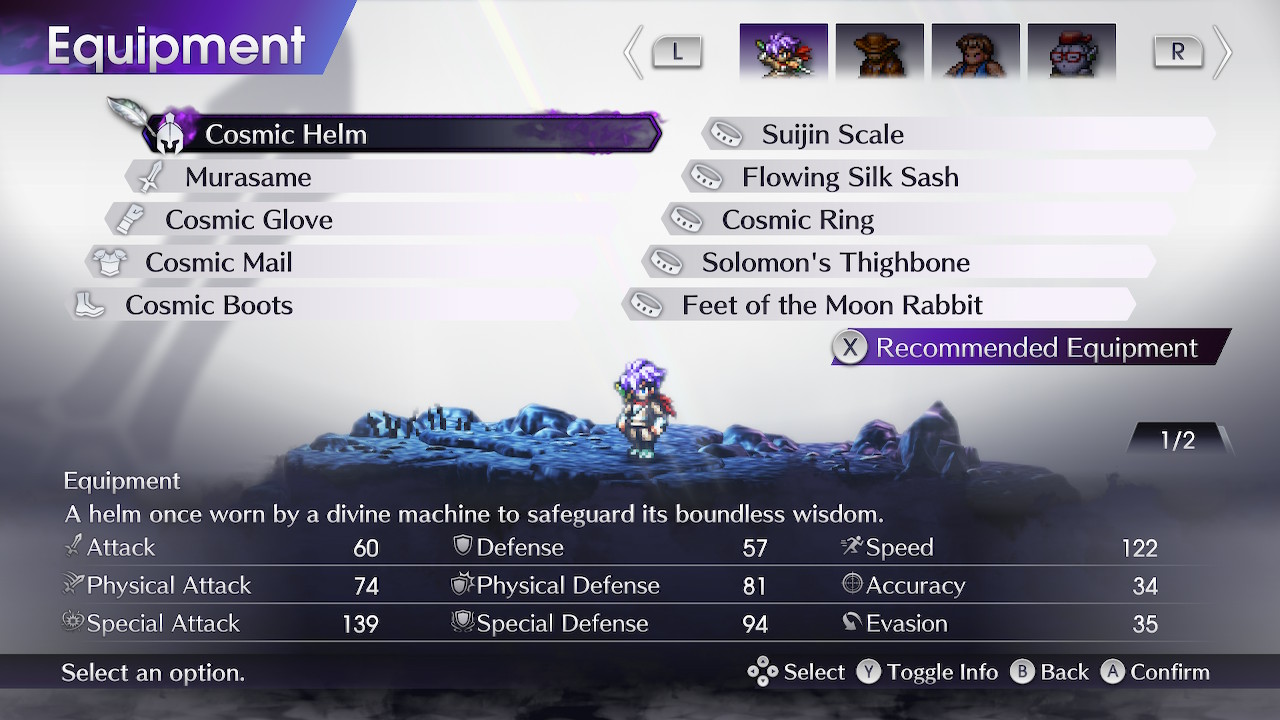
The wild west scenario has the player assume the role of a stoic gunslinger like the one in the “Dollars” Trilogy. This chapter gets some of the best and funniest dialogue. The developers truly understood westerns and its tropes and they nail the tone flawlessly. It is one of the shortest stories and has only one battle, but setting up traps is the gimmick that defines it.
The present day scenario is about Masaru Takaharu, a young martial artist who aims to be the best there ever was. He is like a mixture of Ryu of Street Fighter and Domon Kasshu; a hot-blooded youth with a red headband and learns combat techniques from his opponents. Gameplay in this story is pure boss battles that test the player’s mastery of the simple, yet deep turn-based combat system.
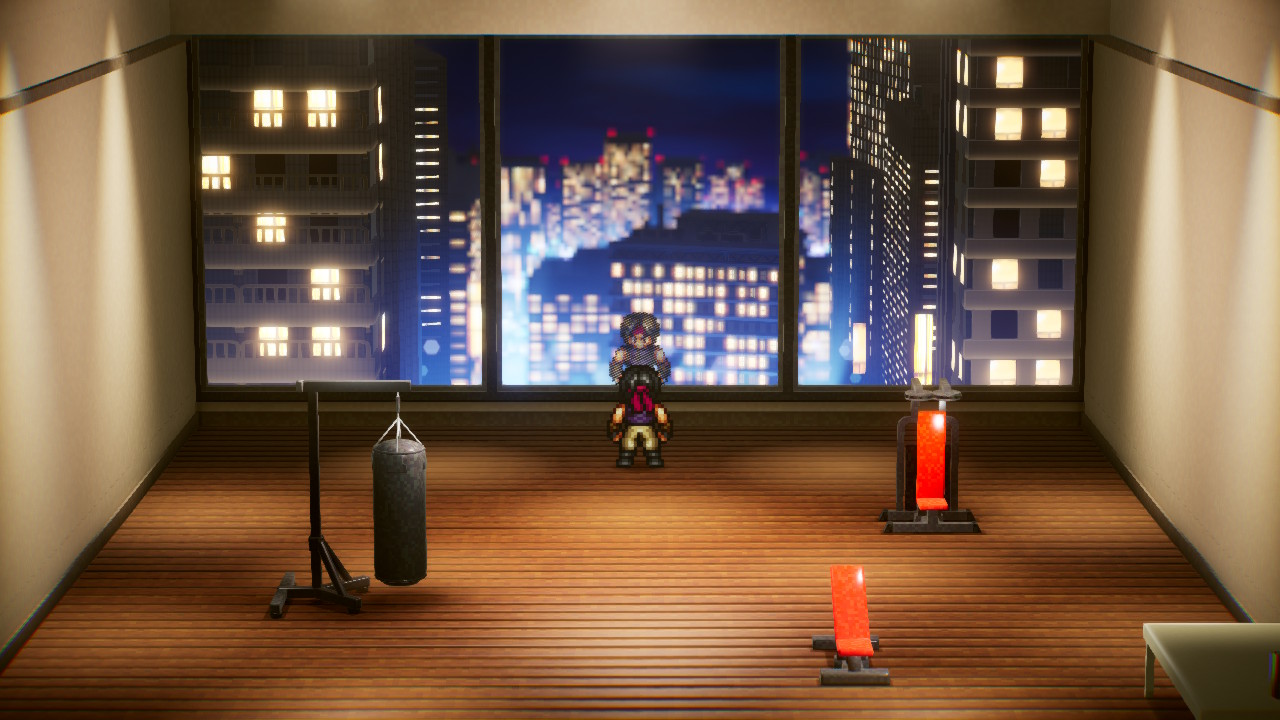
The near future chapter is made up of 70s and 80s anime pastiche. Akira is the most foul-mouthed of the heroes and is gifted with psychic ability that allows him to mind-read. He resembles the hero of Mazinger Z and a little bit of Shotaro Kaneda from AKIRA. His style is focused on buffs and healing.
Near future has biker gangs, giant mechas, corrupt government, and even scenes of intense body-horror. There scenes of kaiju attacks and epic battles are inspired by all the classics the developers grew up on. It is also one of the more difficult scenarios due to the intense circumstances and uphill odds.
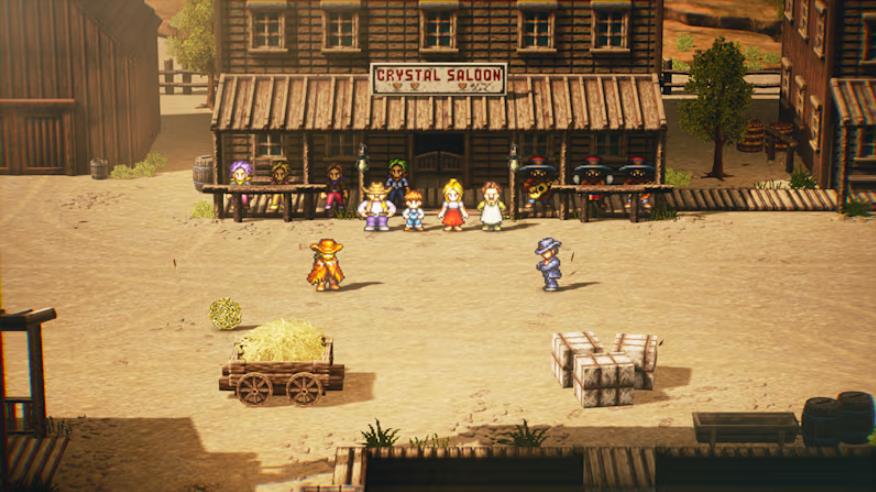
The far future is very obviously inspired by classic sci-fi films. Alien and 2001: A Space Odyssey are the obvious cues, but there are several nods to other classics as well. All characters are named after prominent figures in sci-fi media; one character is named after a captain from Star Trek, and there is even Star Wars and Aliens references in characters’ name.
The protagonist in the far future; Cube, is likely named after Stanley Kubrick- another 2001 reference. Cube’s scenario has no action in it and plays out like a horror-mystery visual novel. There is hardly any music- only the ambience of the spaceship’s groaning and electrical hum.
The voice acting is probably one of the biggest additions that enhance the experience of Live A Live. With so many different genres being represented, there is a lot of variety in performance and style across all the actors. It especially elevates the prehistory chapter where hearing all the “unga-bunga” grunts adds a lot of personality.
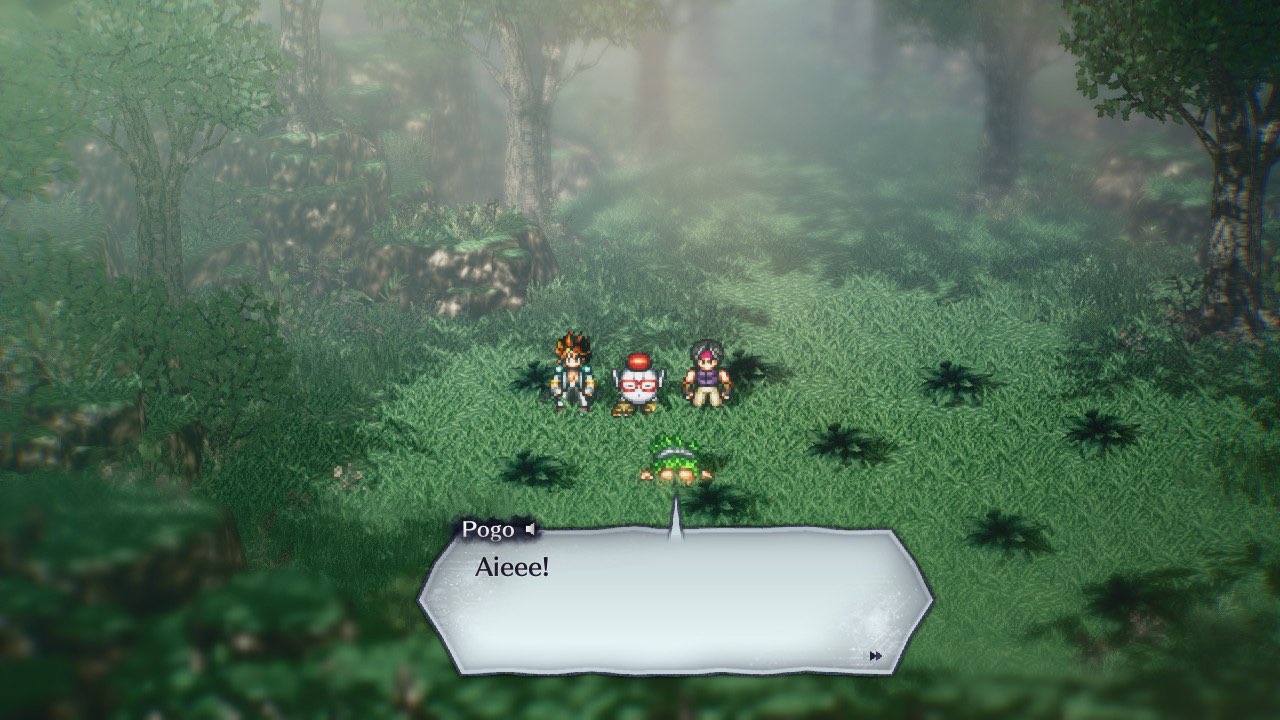
All these stories have an underlying through-line and culminate with the protagonists eventually converging in a big twist. This is where the game truly begins- everything else was setting up broad archetypes, only to pull the rug from beneath the player for assuming that the stories were merely cliché.
Live A Live is about the human condition. Even in the far future where the player is a mute droid, the stories are about the positive and negative aspects of human nature. The writing is very efficient and the plots move along quickly with no fat at all. Characters are well defined and motivations are clear in every story.
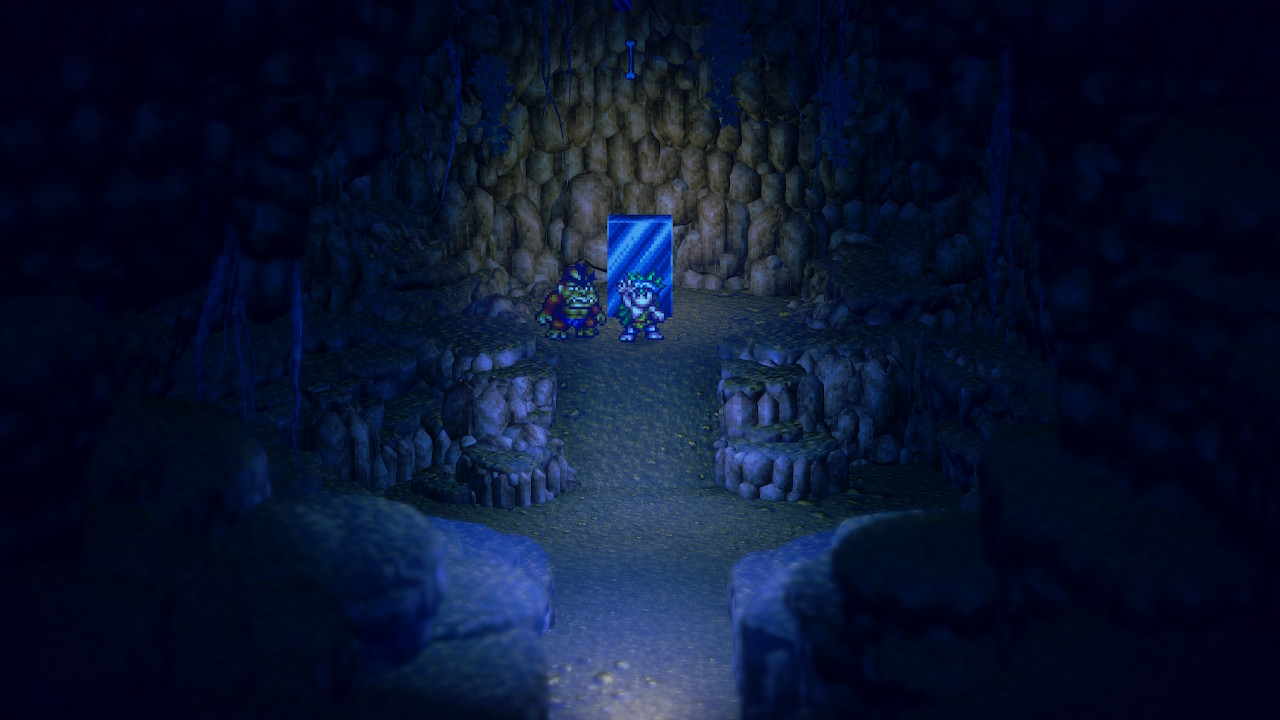
The remake is very faithful to the original. It is impressive how even a prehistoric naked guy with a lizard on his crotch, manages to have more character development and growth in a single chapter than most characters in full fledged 40 hour RPG. Live A Live does not waste any time at all and it packs its story in a lean 20+ hours.
Not everything is perfect. Regretfully, Live A Live’s localization took some questionable liberties in several scenes and a few in particular suffer badly. Akira in the near future no longer steals girl’s panties as a means to show his juvenile antics, but now robs people of money and the mariachis in the old west no longer speak in a Mexican dialect.
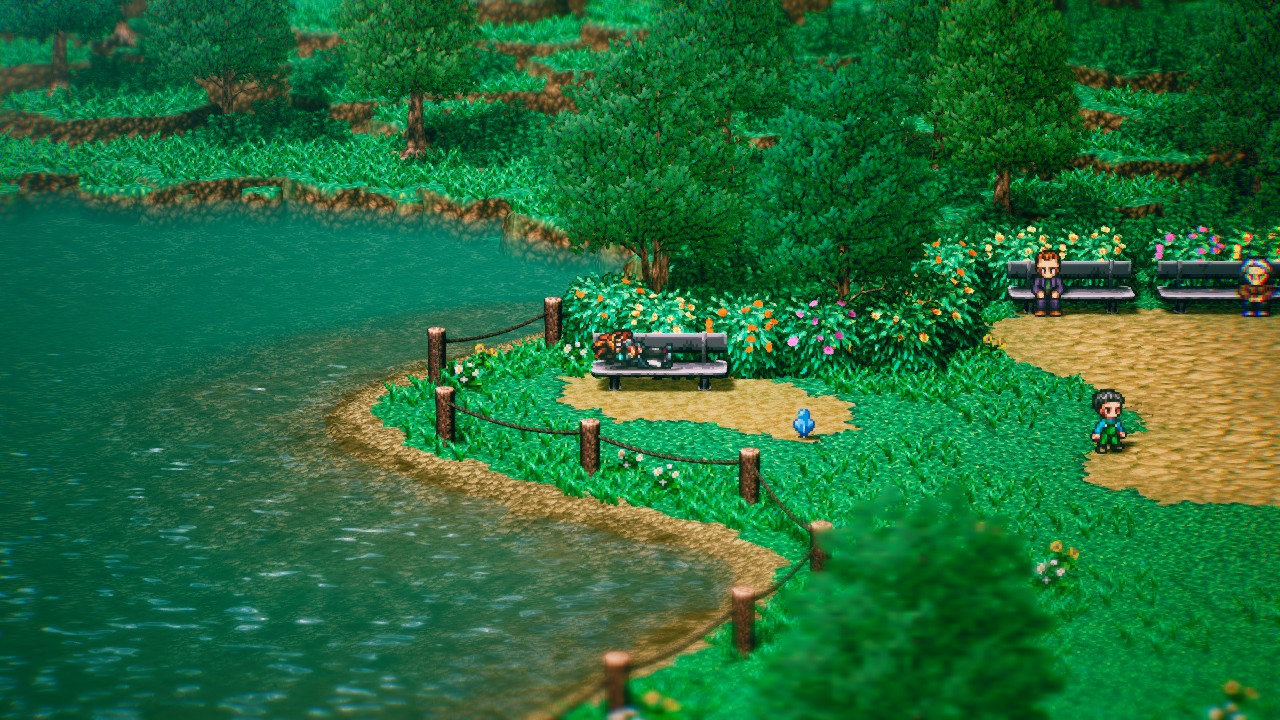
Ironically, it is prehistory (which has no dialogue at all) which fumbles one of the more important translations in the game. This is the only chapter that keeps the Japanese voice acting because its mostly unga-bunga speak, and it climaxes with the one spoken word being “Ai!”, which is Japanese for “love”. This gets translated as “Aiiieeee”, completely bungling the joke.
This could have been saved with the line re-rcorded with a different word that also means “love”. It is a shame that this scene is lost in translation because it sets up a lot about Pogo’s character and the entire thesis of Live A Live. Outside of these miscalculations, the English dialogue is very good and well-acted.
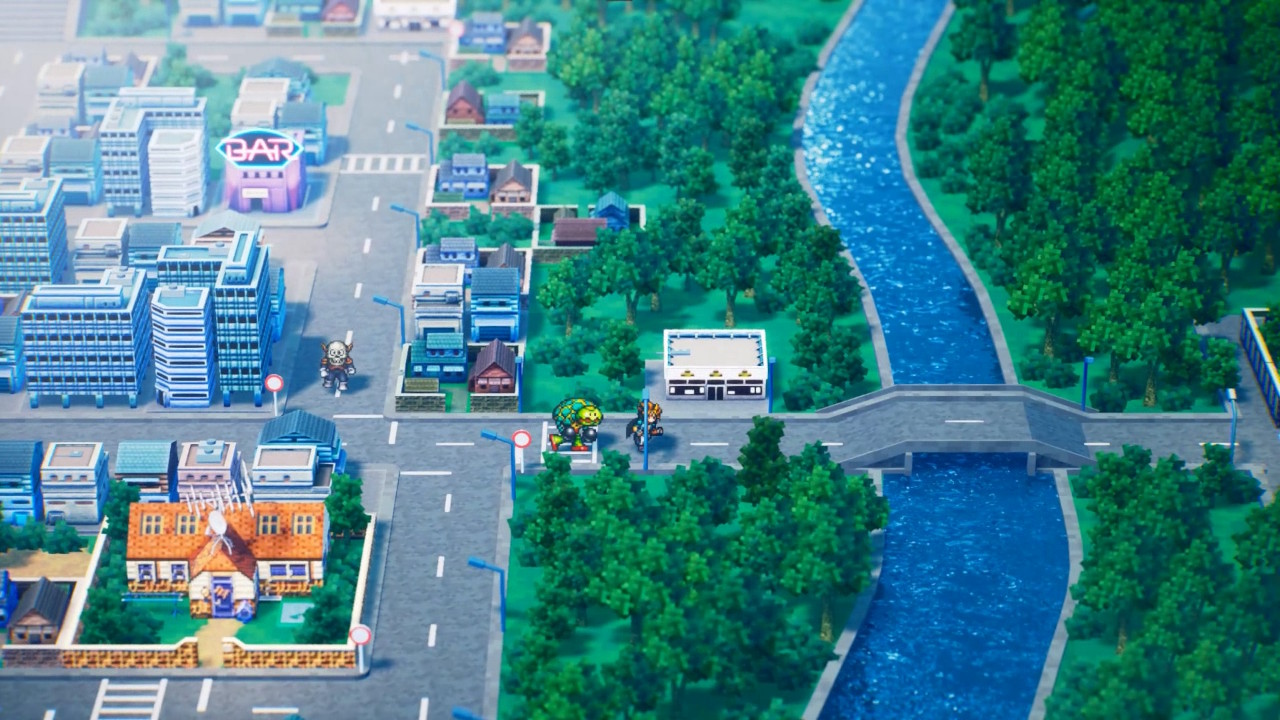
Live A Live is originally an RPG from 1994 and even though it is a classic, there was room for improvement. Tweaks to the game have made it a more enjoyable experience; like enemies’ charge and HP bars being visible to the player and a much improved UI design. Information is much more clear now and players can more effectively strategize without guessing.
Being able to carry over inventory from all characters when their stories converge also makes the latter half of the game so much more fair. This was a hassle in the original game because players could be locked out of precious items they worked hard to acquire.
Another adjustment is in the present day, where Masaru can rematch the bosses to have more chances at learning moves. Some rebalancing tweaks have buffed Akira’s stats. His chapter could easily be the hardest due to his mediocre growth, but now it is more manageable and is a worthy choice for anyone willing to make him one of the final party members.
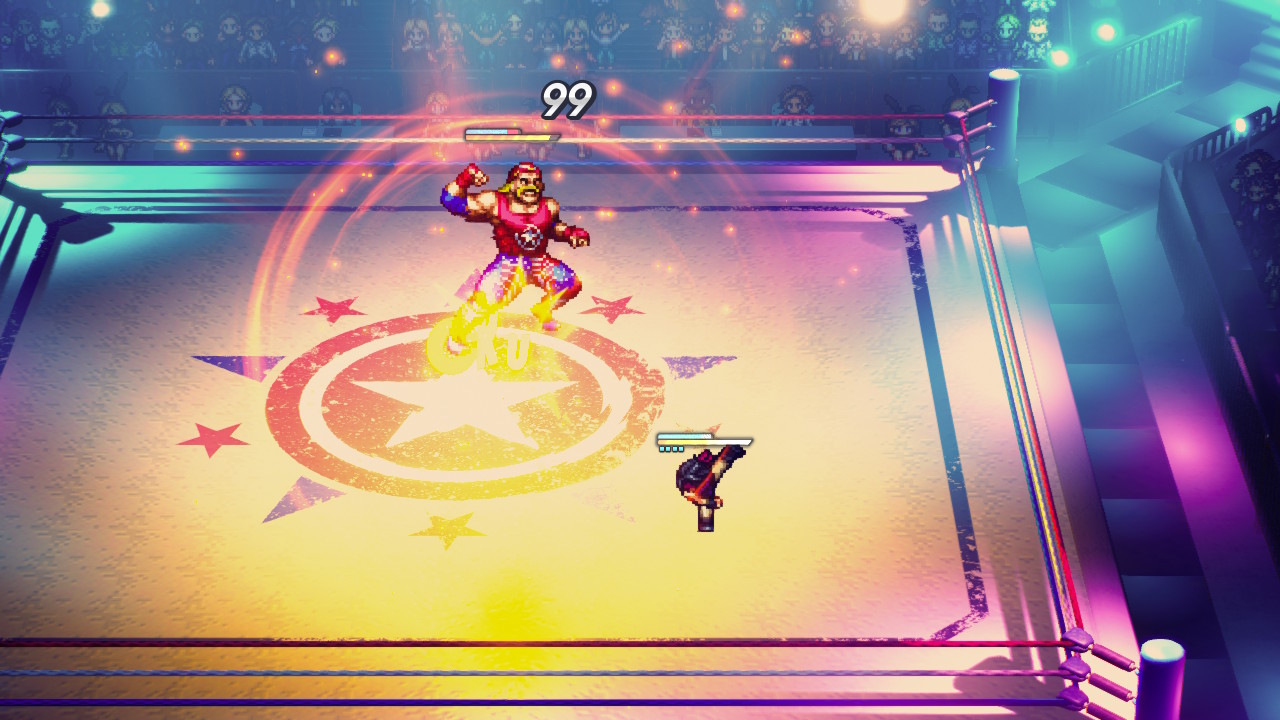
The radar helps keep track of where certain flags are for progress and for side activities. This is useful for the opposite intent- since these stories can be short, most players will want to know what to avoid when progressing. This is very helpful in the Edo scenario and makes it way easier to stick around to do optional boss battles.
The overhauled visuals use the sprite-polygon mix that defines the “HD-2D” ethos established by Octopath Traveler and refined in Triangle Strategy. The original Live A Live looked barebones for a 1994 era Super Famicom game, but these new visuals look stunning. There is so much more vibrant color and varying materials in the pixel art.
Character sprites are so much bigger and more expressive than they used to be. This is especially important for a game that is a love letter to classic cinema, since having bigger and more detailed sprites show a wider range of emotion to convey what is happening in each scene. There are added frames to make gestures more fluid than ever and seem more natural.
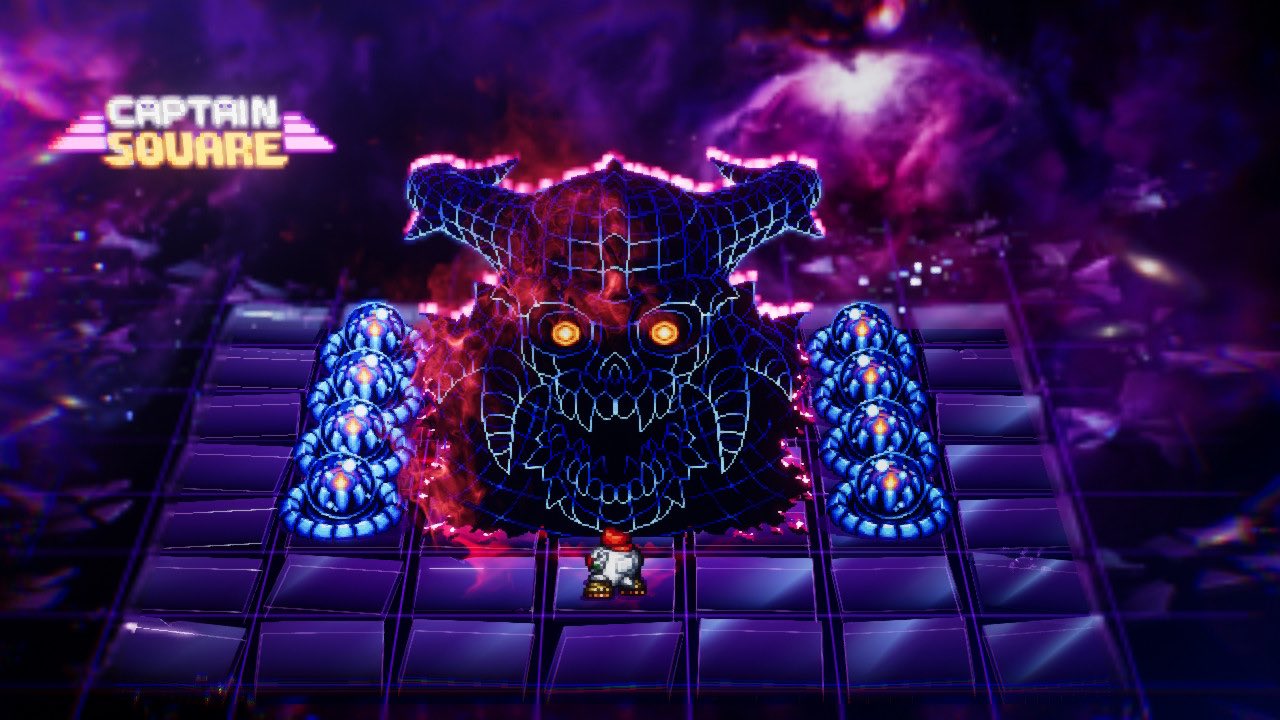
The most crucial aspect to Live A Live‘s experience is its soundtrack. The original composition was done by Yoko Shimomura; a legend in game music today, but in 1994, this was her first large scale project for Squaresoft. She had already established herself at Capcom working on Street Fighter II, and she brings the same kind of boisterous energy and fervor in Live A Live.
As supervisor on the soundtrack of this remake; hearing the old school score redone with modern instruments makes the music sound very consistent with her current day work. Even back in 1994, her style was still unbelievably refined and mature.
Live A Live is one of the greatest RPGs ever made. Fans of Chrono Trigger will definitely want to check this out and even if you played the original, this remake offers some new additions and adjustments that make it more enjoyable than ever. It is too bad that the localization was bungled in some areas, but this will only affect those who are intimately familiar with the original intent.
Live A Live was reviewed on Nintendo Switch using a copy provided by Nintendo. You can find additional information about Niche Gamer’s review/ethics policy here. Live A Live is now available for Nintendo Switch.